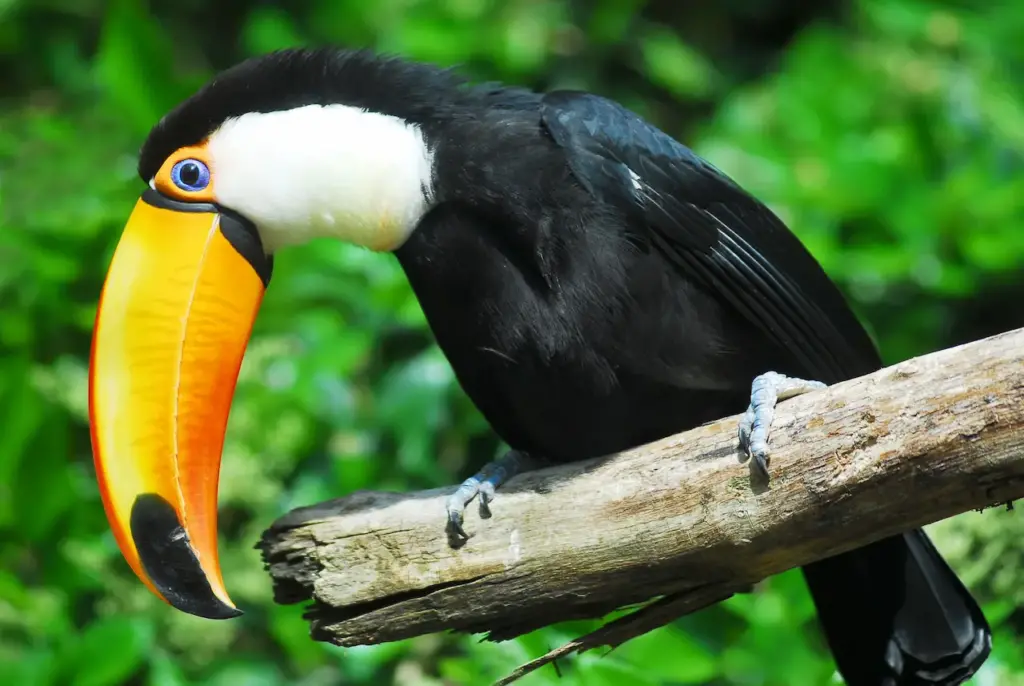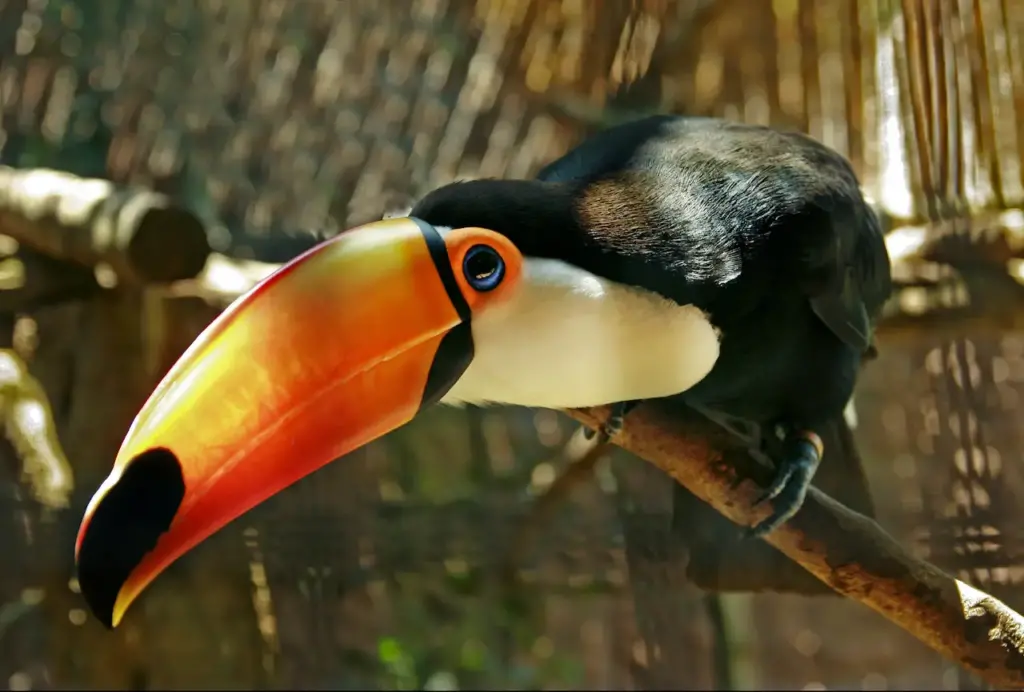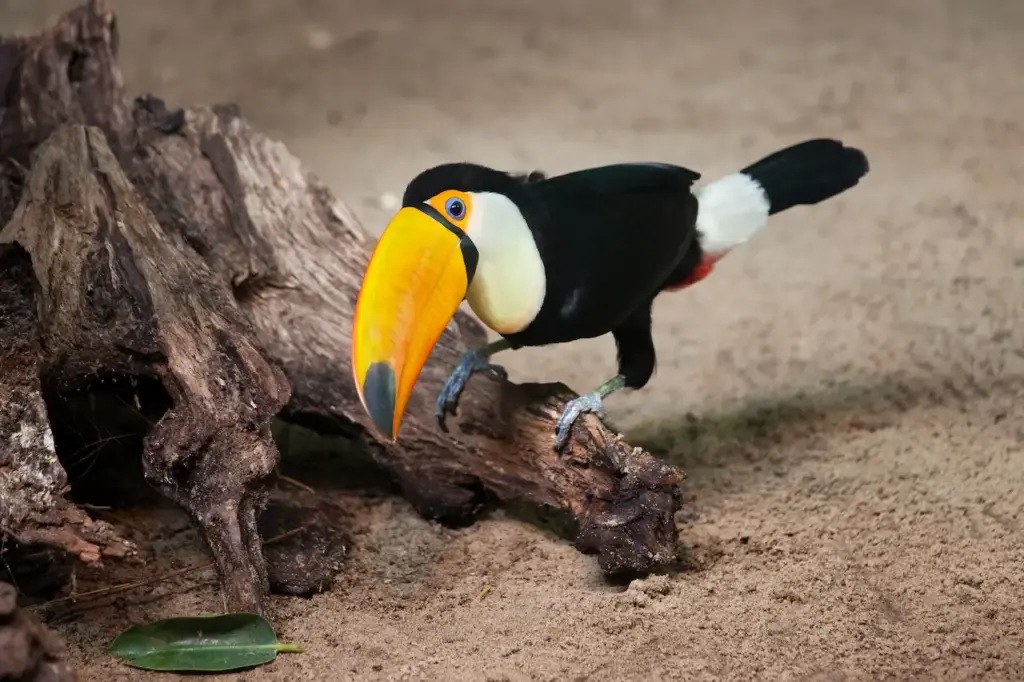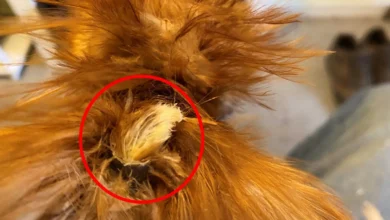The Toco Toucans (Ramphastos toco) is the largest and most recognized of all toucan species because of the bird’s iconic use in advertising.
It appears heavy but it is not. It is hollow and made from protein keratin, with thin bone rods to support it.
Its tongue looks like a feather and is used to flick food into its throat.

Toucans in their native region are believed to be demons and evil spirits. Toucans are forbidden to be eaten by the father of a newborn child in certain religions from South and Central America. It is believed that it will cause the baby to become ill and fade away. These birds are also used by tribes as totems and medicine men may fly into the spirit world using them.
Toucans emit a loud, froglike sound that can be heard from up to half a mile away.
Toco toucans are poor flyers, and they move from one tree to another by mostly hopping.
Scientists have not yet discovered the exact function of a bill this large, but they think it could play a role in courtship displays and defensive weapons.
Toucans turn their heads so that the long bill is on their back, and their tails are folded over their heads. The bird turns into a ball. Five to six adults can sleep in a hole.
Distribution
Toco Toucans have the widest distribution of all toucans occurring in central and eastern South America, where they inhabit tropical areas and dry savannahs. Unlike other toucans, they typically don’t inhabit forests.
They are mostly resident, although local movements may occur in response to weather conditions and availability of food.
Over most of its range, the Toco Toucan is fairly common and is, therefore, considered to be of Least Concern.

Toco Toucans are found in:
- northern and eastern Bolivia,
- extreme south-eastern Peru,
- northern Argentina,
- eastern and central Paraguay,
- eastern and southern Brazil (excluding southern Rio Grande do Sul, the dry regions dominated by Caatinga vegetation and coastal regions between Ceará and Rio de Janeiro).
- along the lower Amazon River (Ilha de Marajó west approximately to the Madeira River),
- far northern Brazil in Roraima,
- coastal regions of the Guianas
Description
With an average length of 25 inches or 64 cm, the Toco Toucan is the largest of all toucans. The average Toco Toucan weighs 25 oz or 700 grams
It has a a striking plumage with a mainly black body, a white throat, chest and uppertail-coverts, and red undertail-coverts. It has a ring of blue skin around the eyes that is surrounded by another ring of bare, orange skin. It has a big yellow-orange bill with a black base and large spot on the tip.
Immature birds have a duller plumage and a shorter bill.
Similar Species
They resemble the smaller Keel-billed Toucans and Chestnut-mandibled Toucans, but these toucans can easily be differentiated by their varying bill patterns and body sizes.
Personality
Unlike the popular parrots, captive toucans cannot learn to talk. On the bright side, they are also much quieter. Generally, they are friendly and easily tamed.
They are fairly long-lived with a lifespan around 20 years.

Breeding / Nesting
The mating ritual is a fun-loving affair for toucans, as they throw fruit to one another.
Like all of their other activities, nesting happens high up in hollow areas in trees. The bill is not effective for digging or any other type of extensive excavation work and so they must rely on holes already formed by other means.
The nests are not lined, but the two to four shiny white eggs that are laid each year rest on a few wood chips created while enlarging the opening or on various kinds of regurgitated seeds collected for this purpose. Parents share equally in incubation duties, but rarely sit on the nest for more than an hour at a time and the eggs are often left uncovered. Both parents share in feeding fruit to the babies for up to 8 weeks.
After 16 days the nestlings are born blind, with no trace of down on their pink skin. The bill is unremarkable until about 16 days old when it takes on the distinguishing features of the toucan, and requires up to four months to develop fully. Feathers begin to expand at 4 weeks.
Babies have pads on their elbows that protect their feet by keeping them elevated until they fledge.
Breeding in captivity requires attention to a number of details. Even successful breeders report rates as low as 30% for the incubation of eggs.
Article (in English and German): Breeding Toco Toucans in Weltvogelpark Walsrode / Tukanzucht im Weltvogelpark Walsrode
Calls / Vocalizations
The Toco Toucans’ calls are described as deep, coarse croaking, typically repeated every few seconds. They also make rattling calls.



